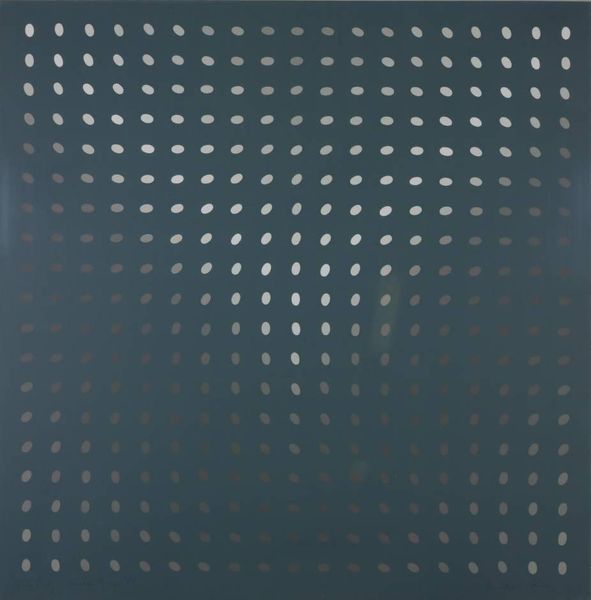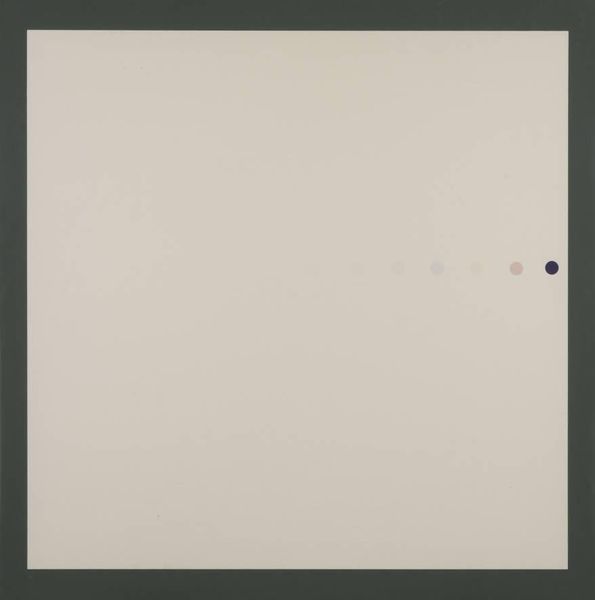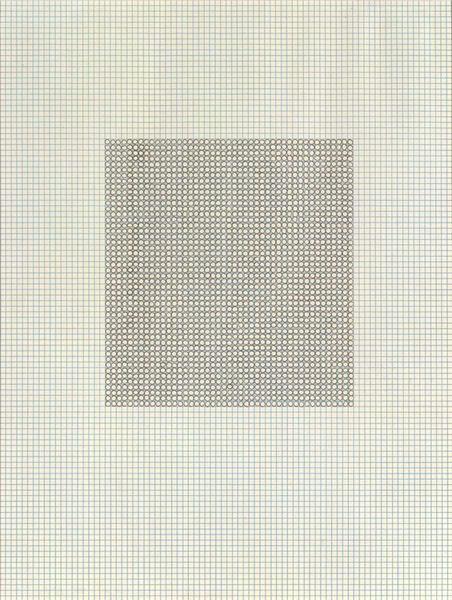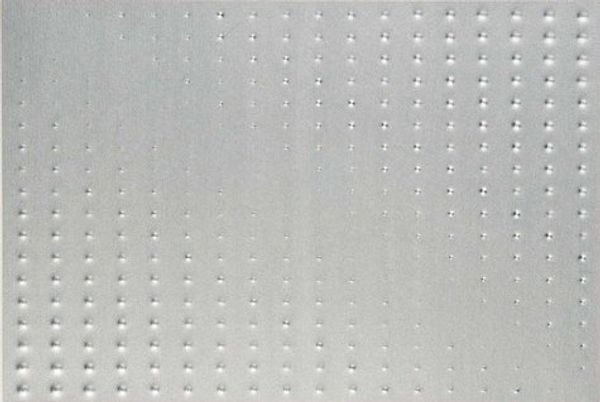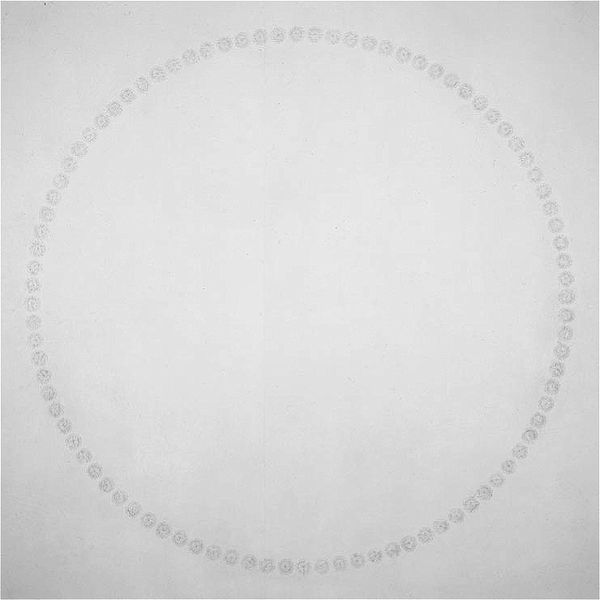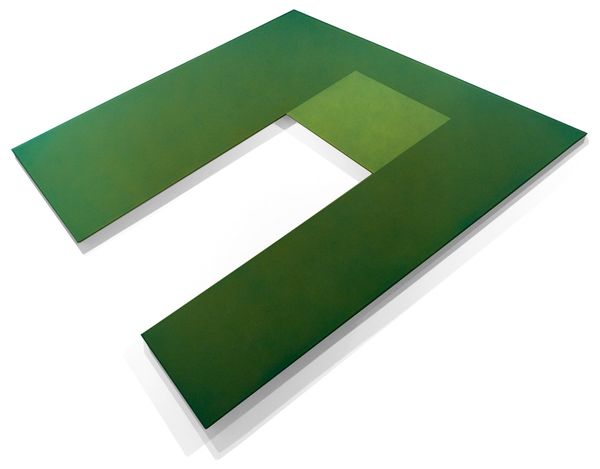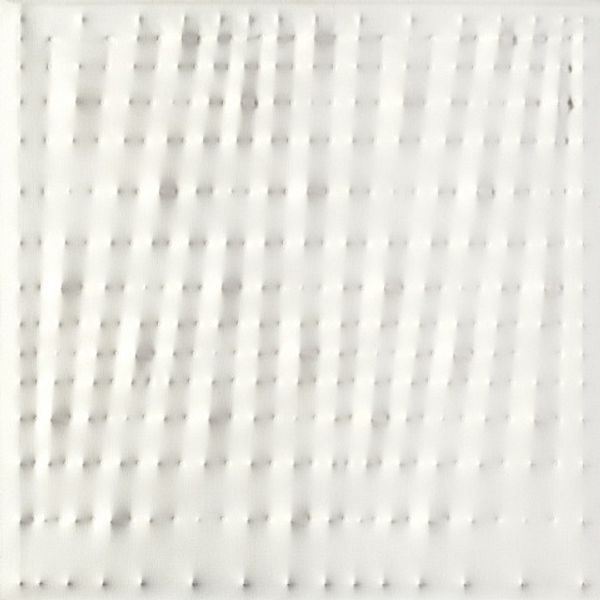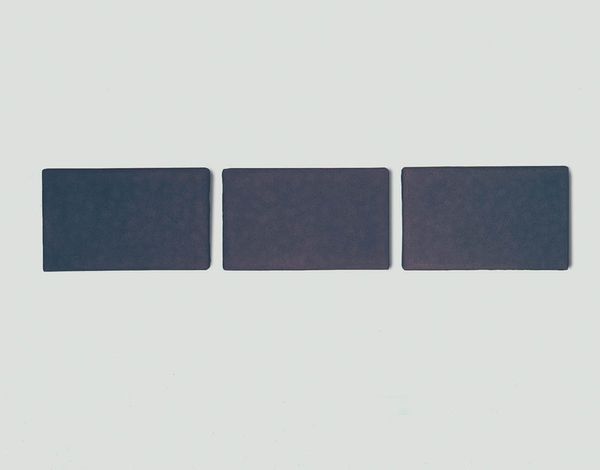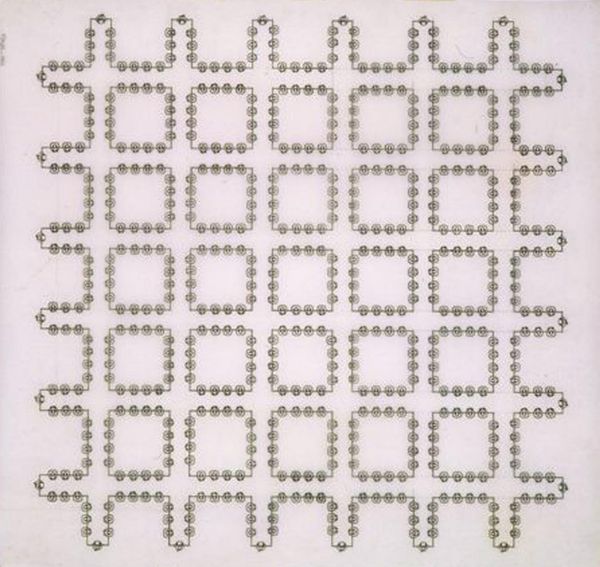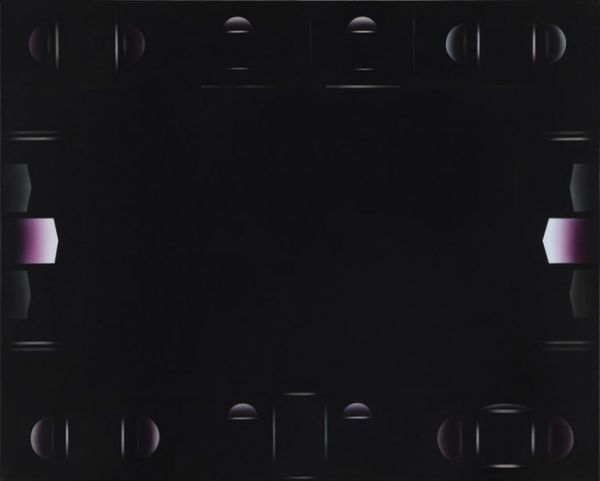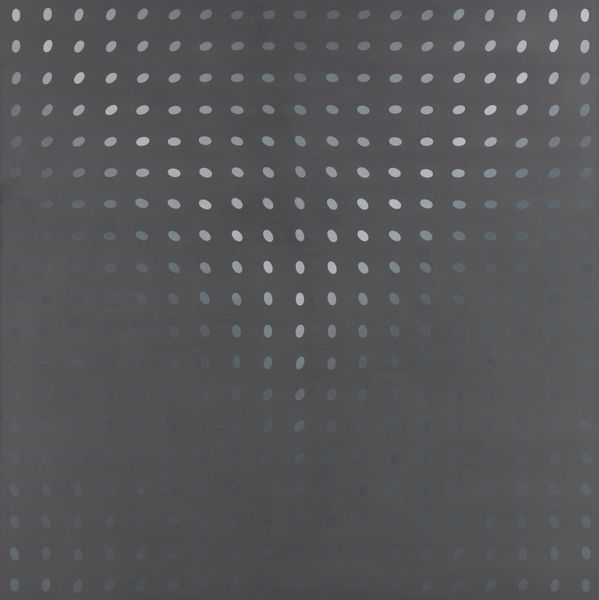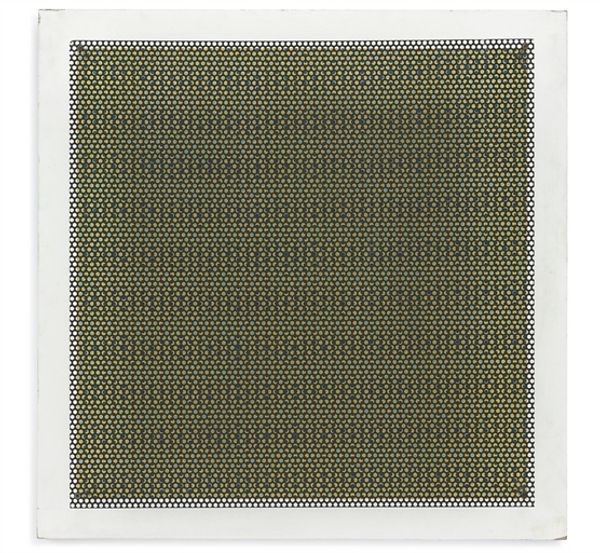
#
red and green
#
minimal typography
#
solid colorbackground
#
green background
#
soft and bright colour
#
artificial colours
#
experimental typography
#
green and blue
#
pigment primary colours
#
colour experimentation
Copyright: Turi Simeti,Fair Use
Editor: This is "Superficie verde con ovali" by Turi Simeti, created in 1966. It’s deceptively simple—just a green monochrome canvas with subtle oval shapes. I'm curious about its near-monochromatic nature and the interplay of texture. What should viewers take away from this, historically speaking? Curator: Considering the 1960s, think about the social and political context. Minimalism and monochrome art emerged during a period of significant social upheaval and questioning of traditional values. Artists sought to break away from established norms. How do you think this work might be a reflection of, or a reaction against, the established art world and society at large? Editor: It seems almost...rebellious in its stark simplicity, contrasting the extravagant Pop Art of the era. The monochrome palette definitely shuns any grand narratives. Curator: Precisely. Simeti, along with other artists in Europe, explored a visual language focused on reduction and essential forms. The public role of art shifted—from representing reality to questioning its very definition. How does this artwork challenge the role of the artist in your opinion, by, arguably, being visually simple? Editor: Maybe the challenge *is* the simplicity. By stripping away overt expression, it compels the viewer to engage more actively. The repetitive oval motif, I feel, invites a deeper visual exploration of the canvas, beyond its single color. Curator: And that’s the political act of imagery— Simeti demands a heightened visual and sensory awareness. The ovals cast subtle shadows depending on the lighting, thus bringing depth. It's also challenging traditional painting; the subtle modulation pushes back on the grand narrative and demands of a conventional exhibition format, so to speak. Editor: That’s insightful, highlighting the political act that might be present. It makes me see the work as an engagement, almost protest, that focuses on the perception and material awareness. I never thought that there would be a relationship between visual art, the social climate and art exhibitions in a period known for experimentation, like the 60s. Curator: Exactly. Art does not exist in a vacuum and even simplicity communicates in social and historical spaces.
Comments
No comments
Be the first to comment and join the conversation on the ultimate creative platform.
